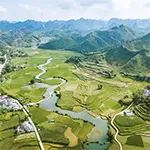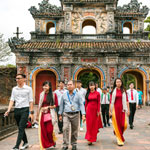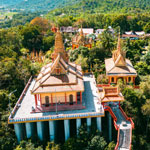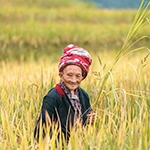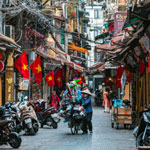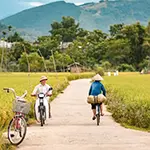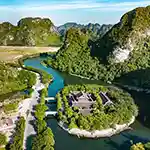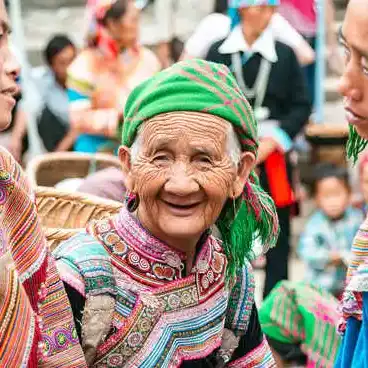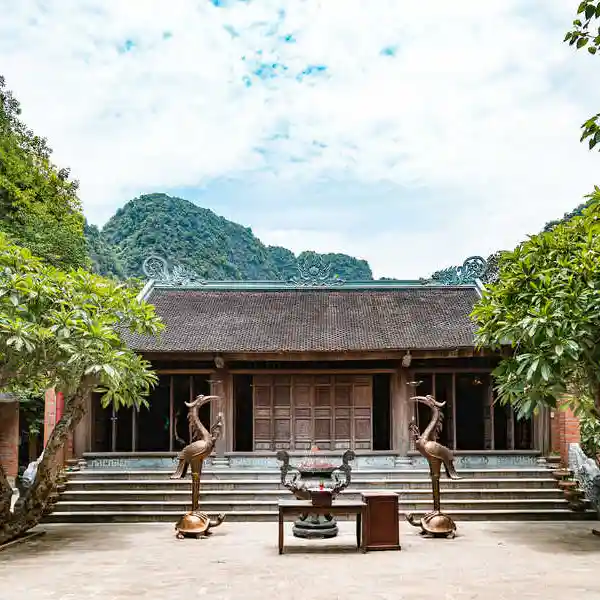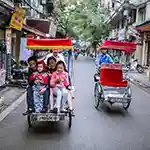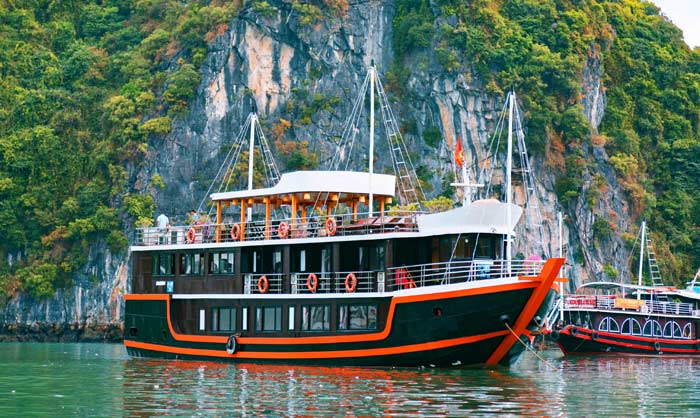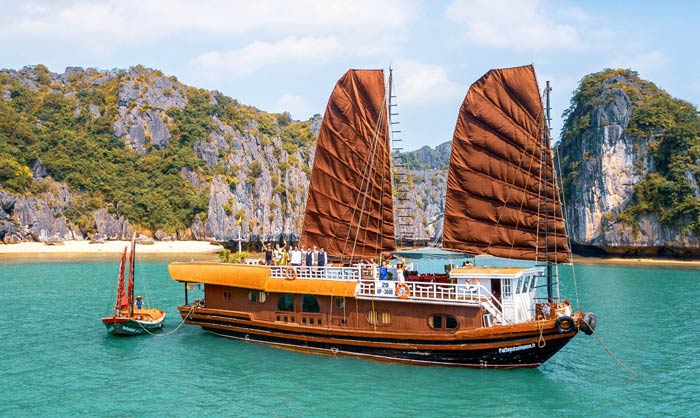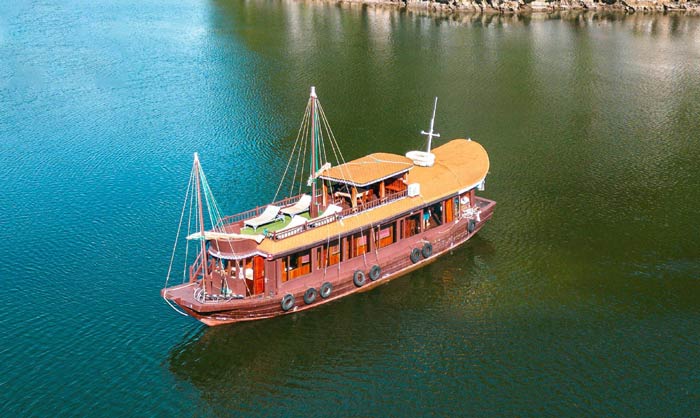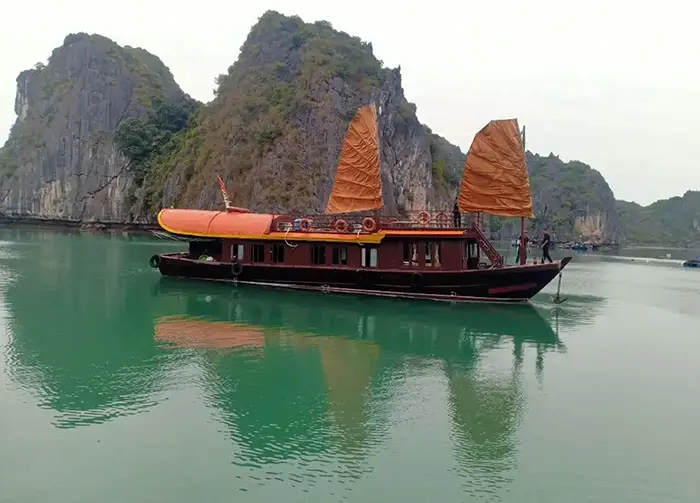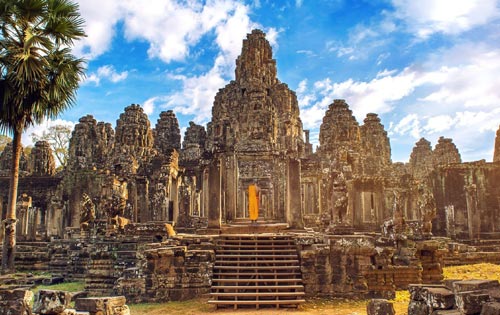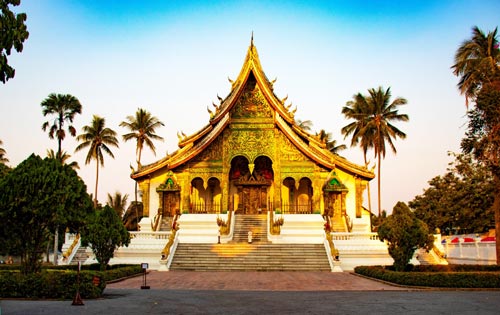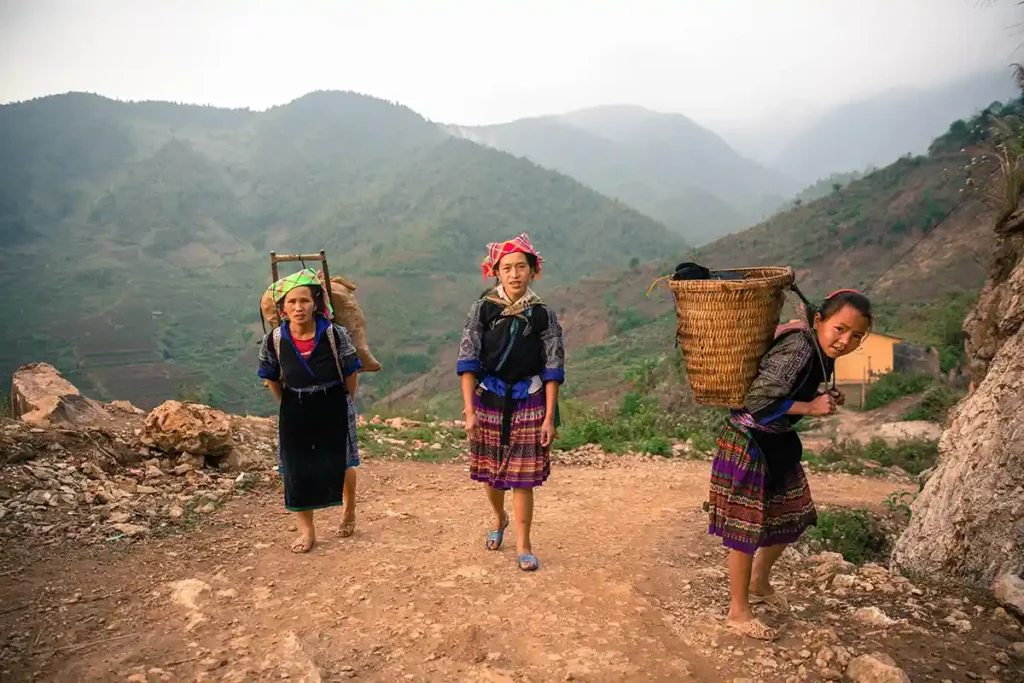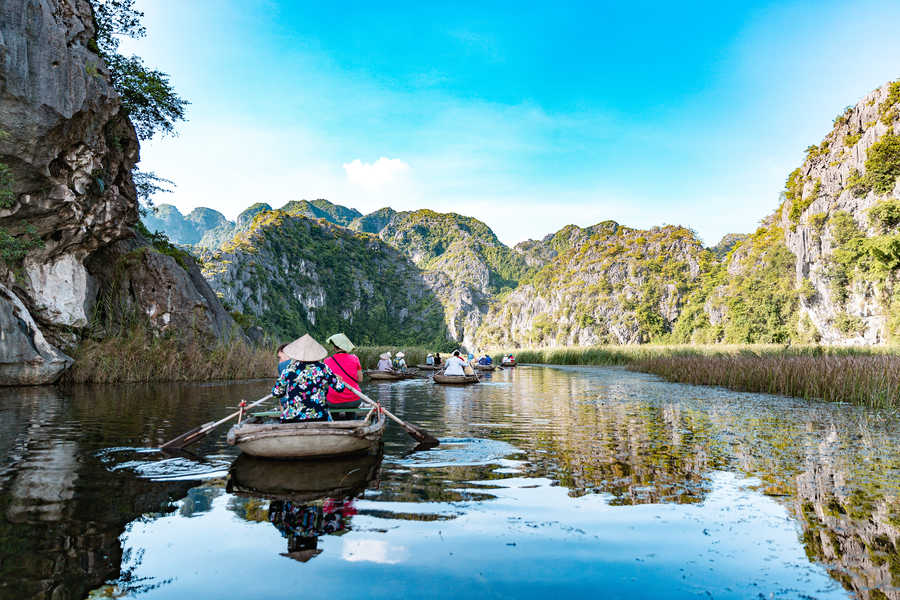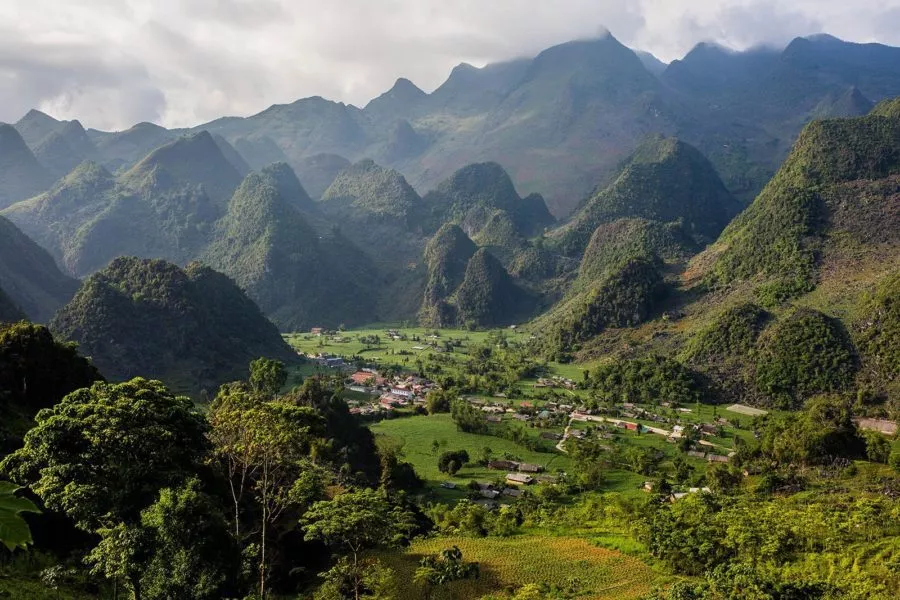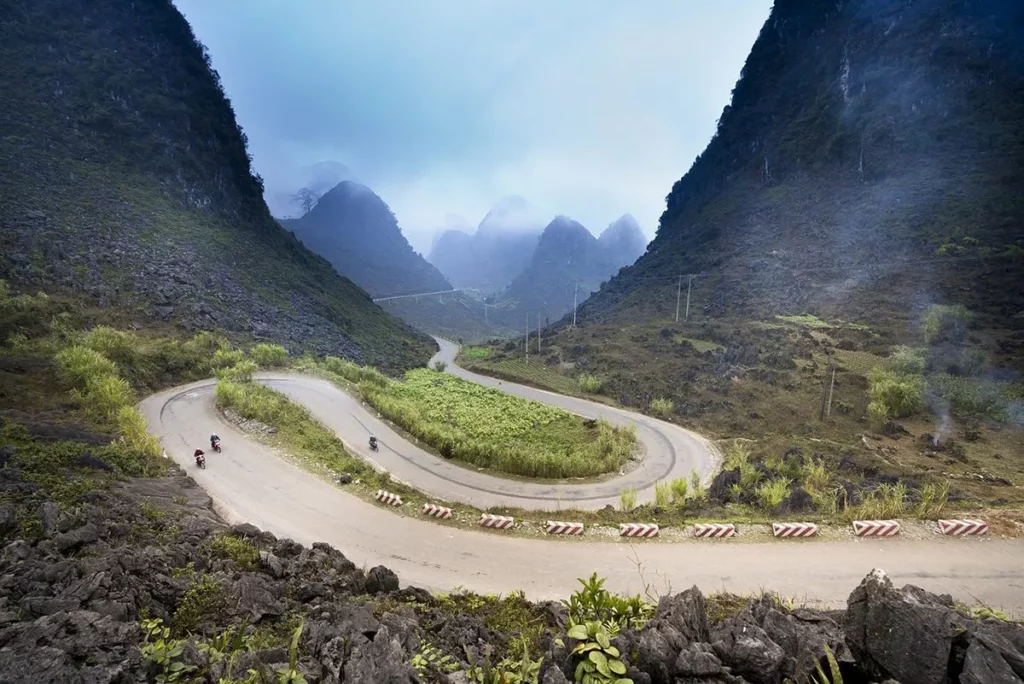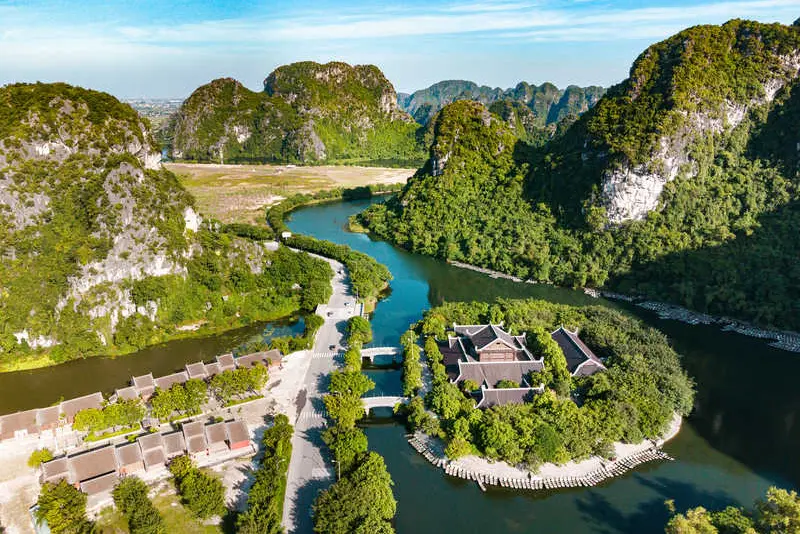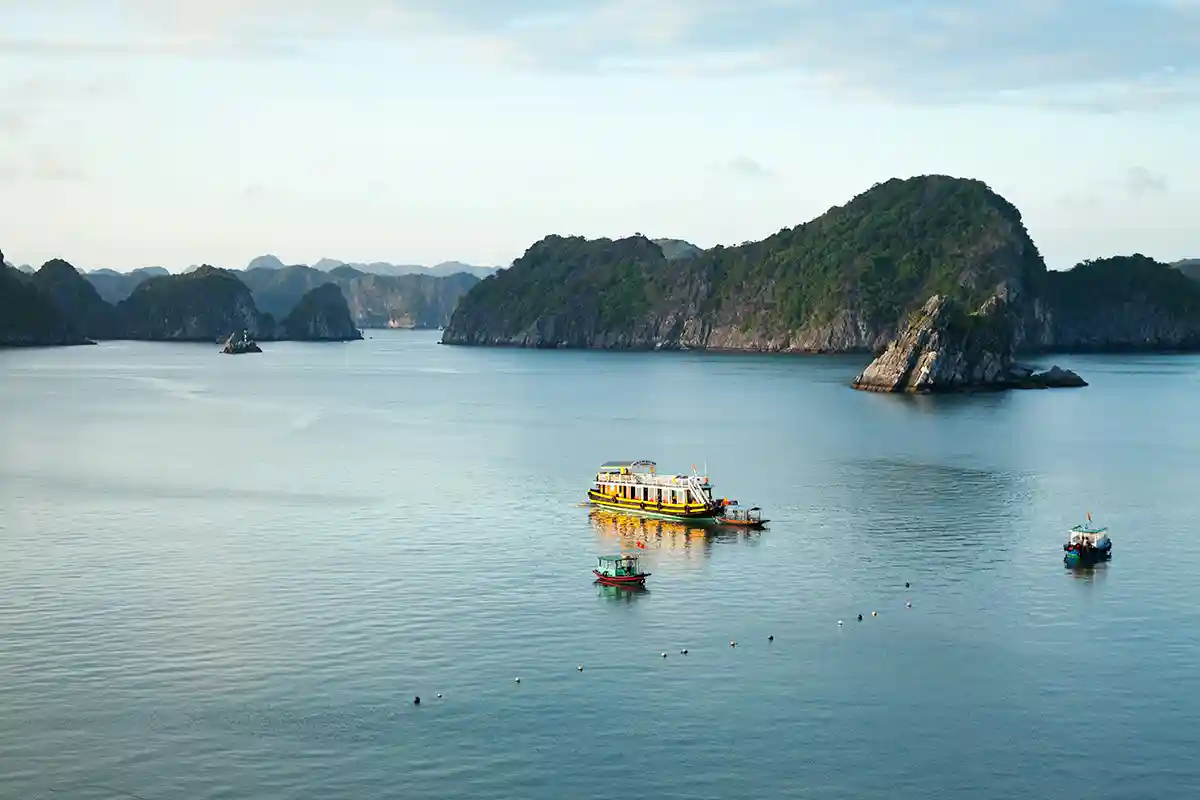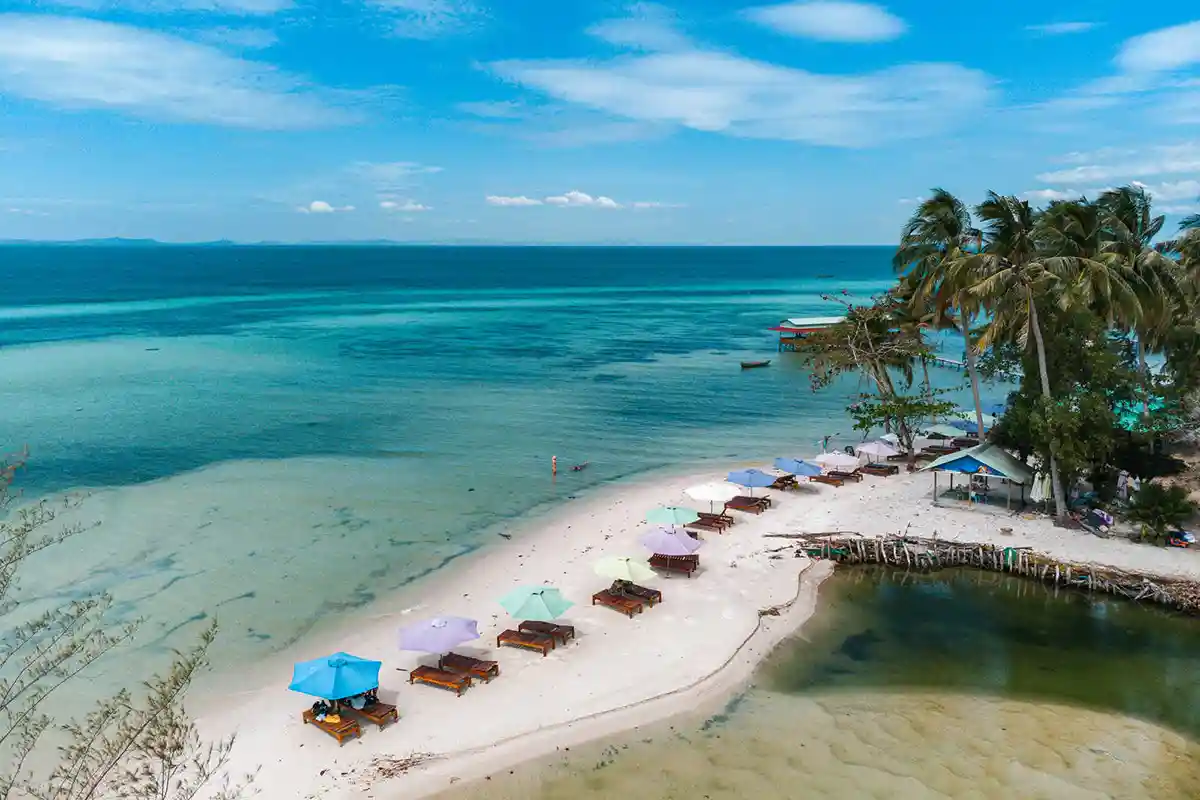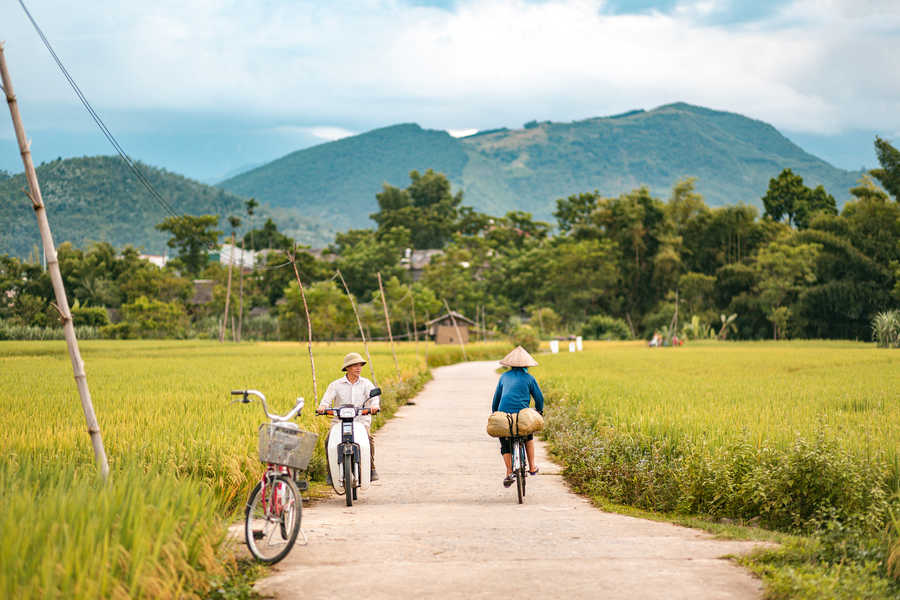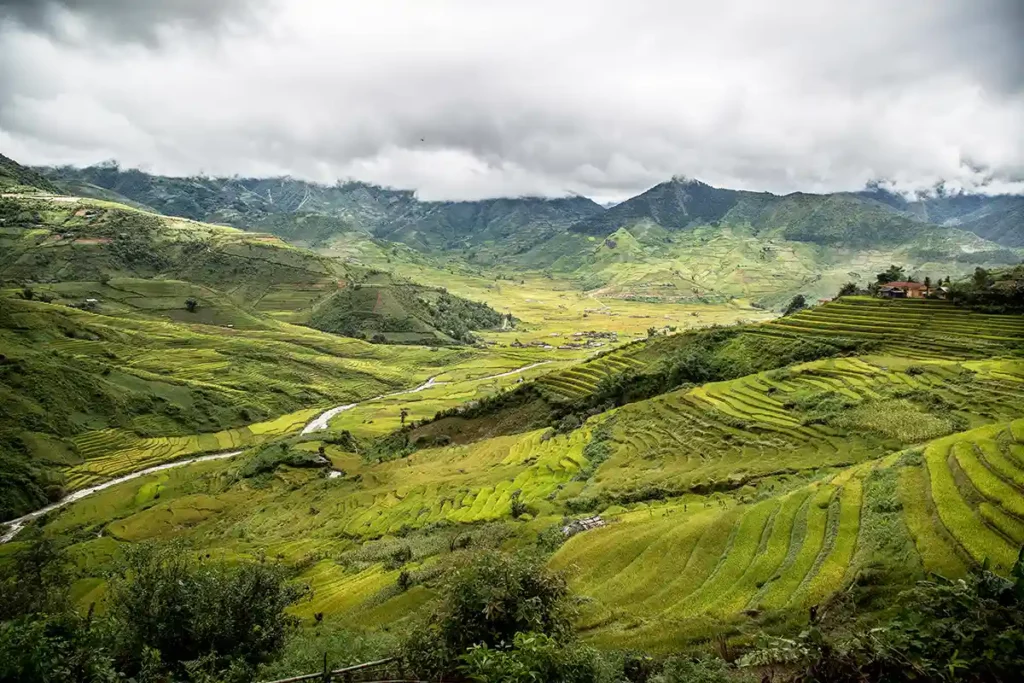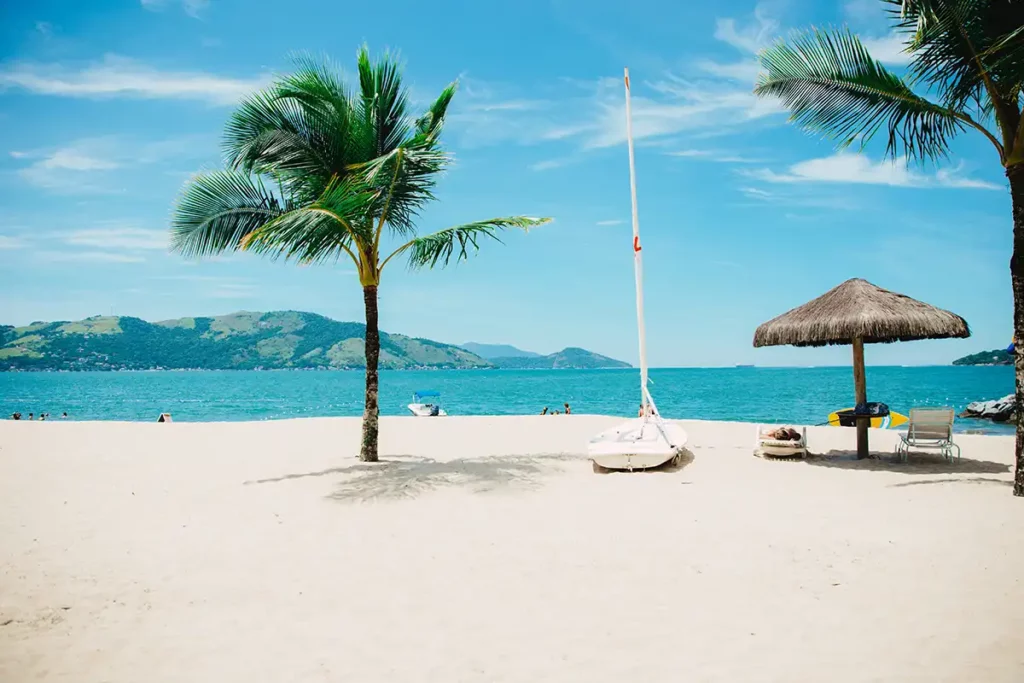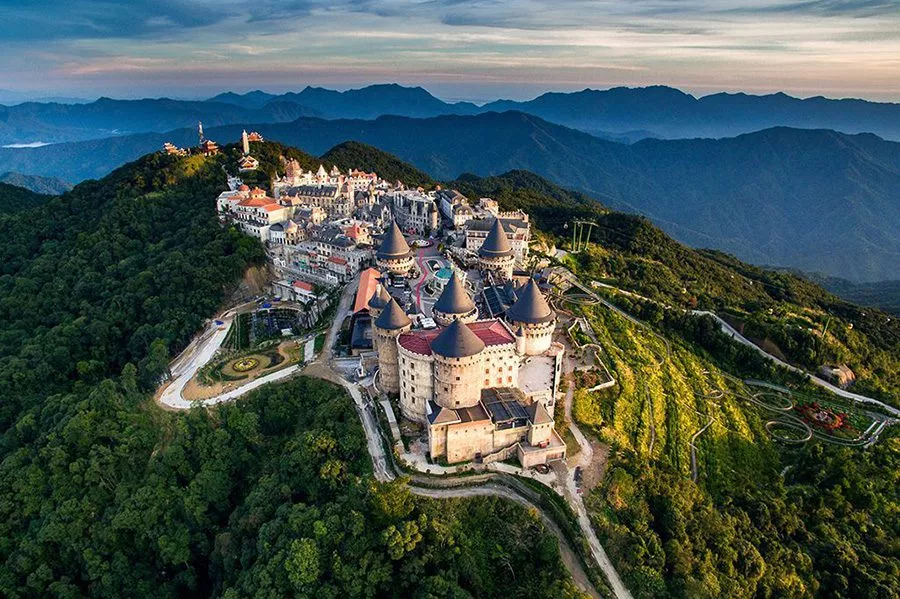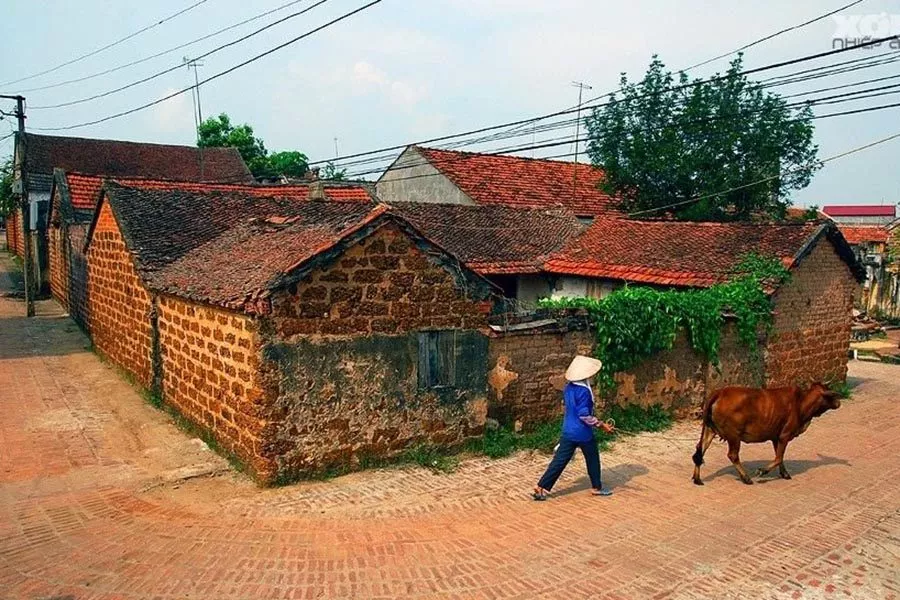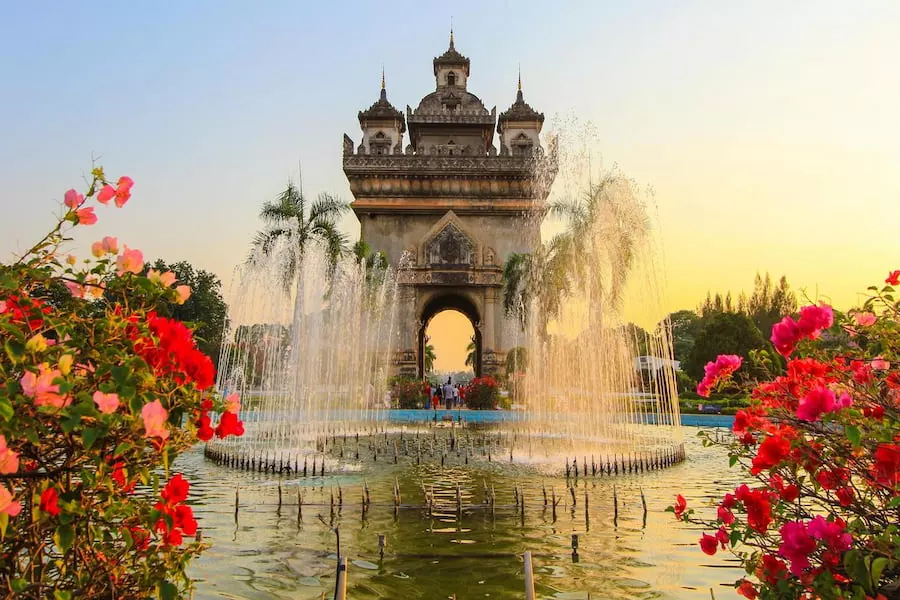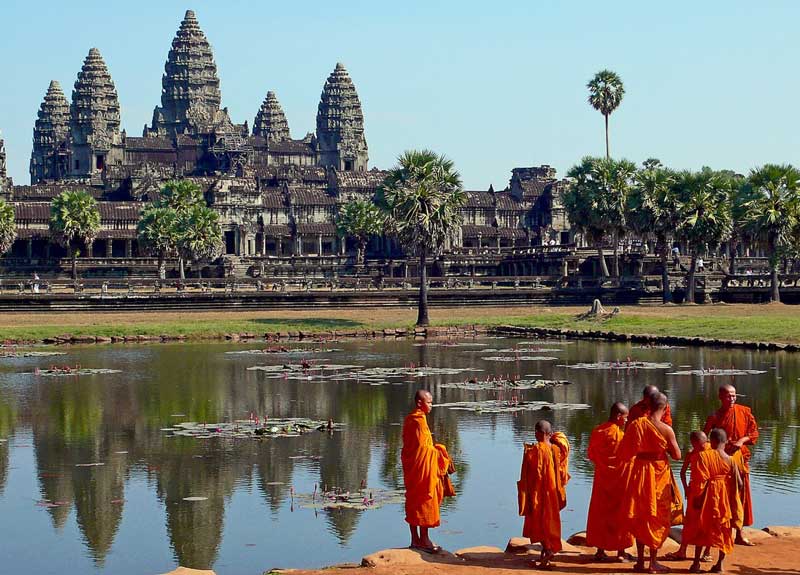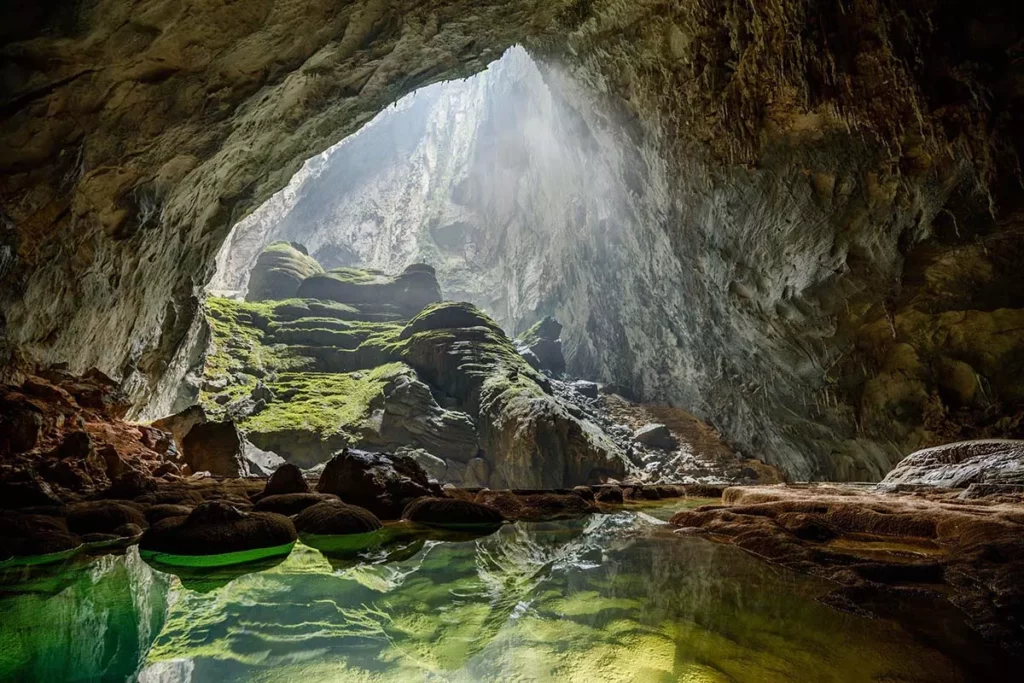Today’s Vietnam is home to a great diversity of populations with different origins, customs, languages, and beliefs.
While the Kinh (Viet) ethnic group is the largest, accounting for more than 85% of the population, 53 other ethnic groups have been identified, making Vietnam a true human mosaic.
This article provides general information about the ethnic minorities of Vietnam and invites you to discover some of them (Hmong, Tay, Dao, Thai, Lolos, Cham, Khmer Krom) through dedicated texts.
The linguistic groups of Vietnam
How do we define a so-called “ethnic group”? What distinguishes them? Primarily, it is the linguistic families that have been chosen as the main criterion for classifying the ethnic groups of Vietnam. Thus, the 53 minority ethnic groups are divided into 8 linguistic family groups. Here they are:
# Viets-Muongs language group : Chut, Kinh, Muong, Tho;
# Thai language group : Bo Y, Giay, Lao, Lu, Nung, San Chay, Tay, Thaï;
# Môn-Khmers language group : Ba Na, Brau, Bru-Van Kieu, Cho-ro, Co, Co-ho, Co-tu, Gie-trieng, Hre, Khang, Khmer, Kho mu, Ma, Mang, M’Nong, O-du, Ro-mam, Ta-Oi, Xinh-mun, Xo-Ðang, Xtieng;
# Hmong-Dao language group : Dao, Mong (H’Mong), Pa Then;
# Kadai language group : Co lao , La-chi, La ha, Pu Peo;
# Austronesian language group: Cham, Churu, Ede, Giarai, Raglai;
# Han Chinese language group: Hoa, Ngai, San diu;
# Tibeto-Burman language group: Cong, Ha Nhi, La Hu, Lo Lo, Phu La, Si La.
Within these linguistic groups, populations still differ according to their geographical origins, customs, and beliefs. Even their individual languages vary. Nevertheless, it is generally easier for populations within the same linguistic family (and with geographically close origins) to understand each other.
Demographics of Vietnam’s Ethnic Minorities
Setting aside populations from neighboring countries, such as the Chinese, the largest minority ethnic group is the Tay, recorded in 2009 at 1,650,000 people. They are followed by the Thai, Muong, Khmer, and Hmong. The Hmong, perhaps the best-known minority due to their role in Vietnam’s contemporary history, number around one million. Some ethnic groups are extremely small; for example, the O’du were recorded at just 376 people in 2009.
Due to population movements and the nomadic nature of some groups, state borders have long been irrelevant for most of these ethnicities. Populations can be found not only in Vietnam but also in Laos, Cambodia, and China. Let’s take a closer look at the geographical distribution of these ethnic groups within Vietnam.
Note: These figures come from the 2009 national census, which is conducted every 10 years. The next official report will be released in December 2019.
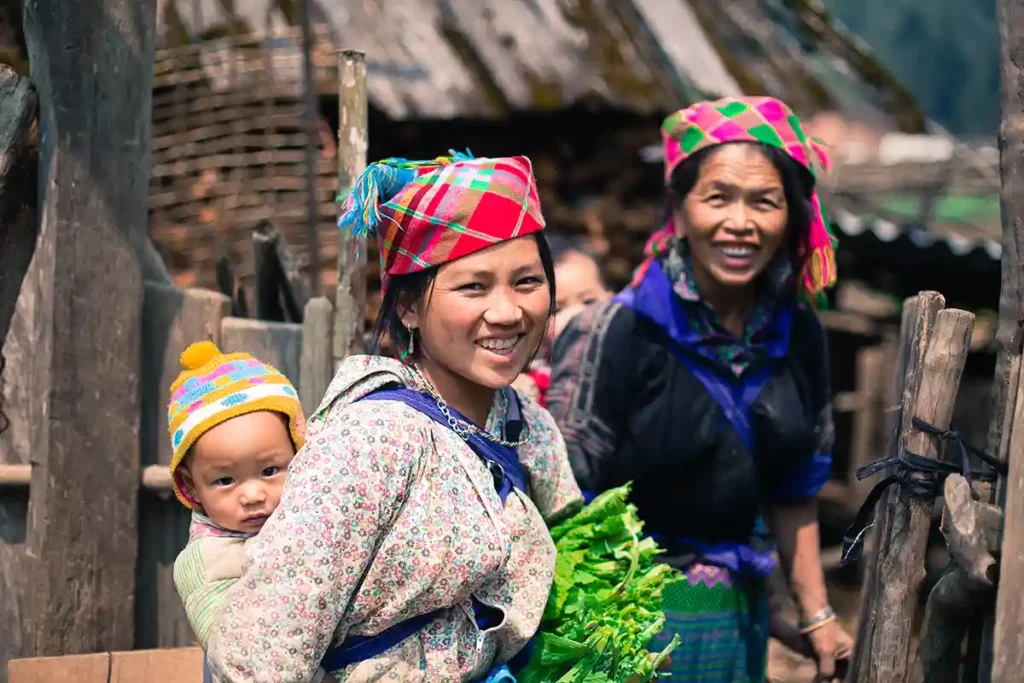
Hmong women in Mu Cang Chai, Yen Bai, Vietnam. Photo credit: Mathieu Arnaudet
Distribution Across Vietnam
Most minority ethnic groups are located in northern Vietnam, in the mountainous region near the borders of China and Laos (Tonkin). However, some are also found in the Central Highlands (Annam) and the South (Cochinchina).
In the northern region, you will encounter the largest ethnic groups, including the Tay, Muong, Hmong, Dao, and Nung. Most of these communities are farmers who cultivate rice and practice slash-and-burn agriculture. They also engage in livestock raising.
In the central region, the former Annam, many small ethnic groups live here, cultivating a variety of crops such as tea and coffee. Around Nha Trang, you can encounter the Cham ethnic group, numbering around 125,000 people. They are one of the few populations in Vietnam practicing Islam.
In the Mekong Delta, you will mostly encounter the Khmer Krom population, numbering over one million people.
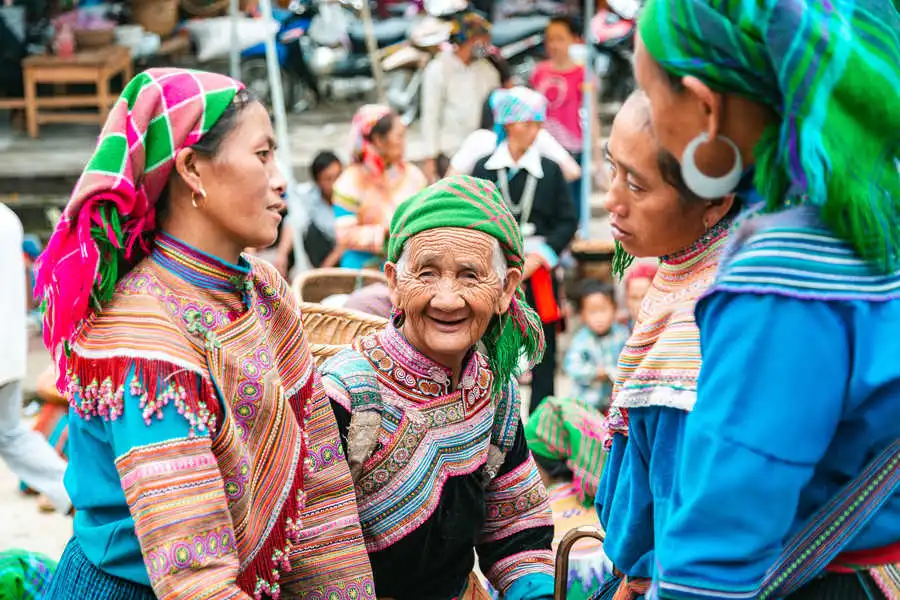
Hmong women at Bac Ha market. Photo credit: Mathieu Arnaudet
We now invite you to explore the customs of some specific ethnic groups.
Portraits of Selected Ethnic Groups
Tay ethnic group
The Tay ethnic population lives primarily in the northern part of the country, specifically in the Northeast. Many Tay communities are found in the provinces of Cao Bằng, Lạng Sơn, Bắc Kạn, Thái Nguyên, and Quang Ninh, where they generally reside in valleys or at the foot of mountains. The Tay are the largest minority ethnic group in Vietnam.
To learn more about the customs and beliefs of the Tay, read this portrait.
Thai ethnic group
The Thai/Tai are the second-largest ethnic group in Vietnam in terms of population, estimated at nearly 1.5 million people. This population is divided into two distinct groups within Vietnam: the White Thai (Tai Don) and the Black Thai (Tai Dam). They are mainly settled in the northern valleys of Vietnam, in the provinces of Hoa Binh, Yen Bai, and Dien Bien Phu.
To learn more about the customs and beliefs of the Thai, read this portrait.
Hmong ethnic group
The Hmong are a people originally from the mountainous regions of southern China, northern Vietnam, and northern Laos. Their global population is estimated at around 5 million. Many Hmong now live in the United States or Canada, having fled their homelands at the end of the war against the Americans. Those who remained in Vietnam live at high altitudes in the provinces of Lao Cai, Ha Giang, Cao Bang, Lang Son, and Lai Chau.
To learn more about the customs and beliefs of the Hmong read this portrait.
Lolo ethnic group
The Lolos are a population originally from western China, with a small group having settled in Tonkin from the 15th century onward. In Vietnam, there are two subgroups: the Flowered Lolos, who live in the districts of Méo Vac and Dong Van (Ha Giang Province), and the Black Lolos, who live in the Bao Lac district (Cao Bang Province). Their cultures are very similar, but their clothing differs significantly!
To learn more about the customs and beliefs of the Hmong read this portrait.
Cham ethnic people
The Cham are a people originating from the Kingdom of Champa, which was established between the 12th and 17th centuries on what is now Vietnamese territory, specifically in what is today called the Central Highlands. This people originally came from islands that are now part of Malaysia and Indonesia. Today, the Cham are spread across several countries: there are approximately 300,000 in Cambodia and 125,000 in Vietnam. Smaller populations also live in Laos, Malaysia, Thailand, the USA, and France. Those who emigrated far from their homeland had to flee the atrocities of the Khmer Rouge, who are believed to have exterminated between 100,000 and 500,000 Cham between 1975 and 1979.
In Vietnam, their villages are located near the coast in the Ninh Thuan and Binh Thuan provinces, close to the city of Phan Rang, also known as Panduranga, a historical site of the Cham Empire.
To learn more about the customs and beliefs of the Cham, read this portrait.
Khmer Krom ethnic group
This population consists of people of Khmer origin (from Cambodia) but living exclusively in Vietnam. In Vietnamese, they are clearly called Người Việt Gốc Miên (Vietnamese of Khmer origin). The Khmer Krom live in the Mekong Delta provinces and form the second-largest ethnic group in this part of the country after the Kinh (Viets). Sóc Trăng Province has the highest concentration of Khmer Krom, with over 30% of its population identifying with this ethnic group.
To learn more about the customs and beliefs of the Khmer Krom, read this portrait.

